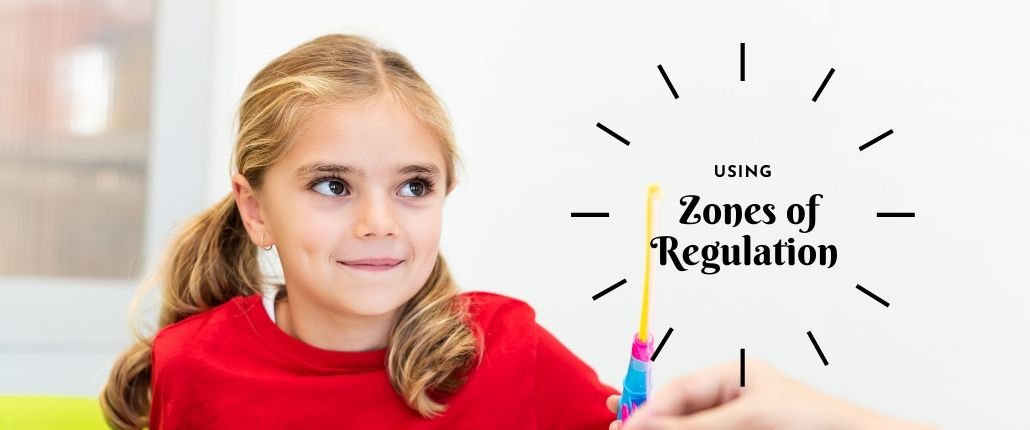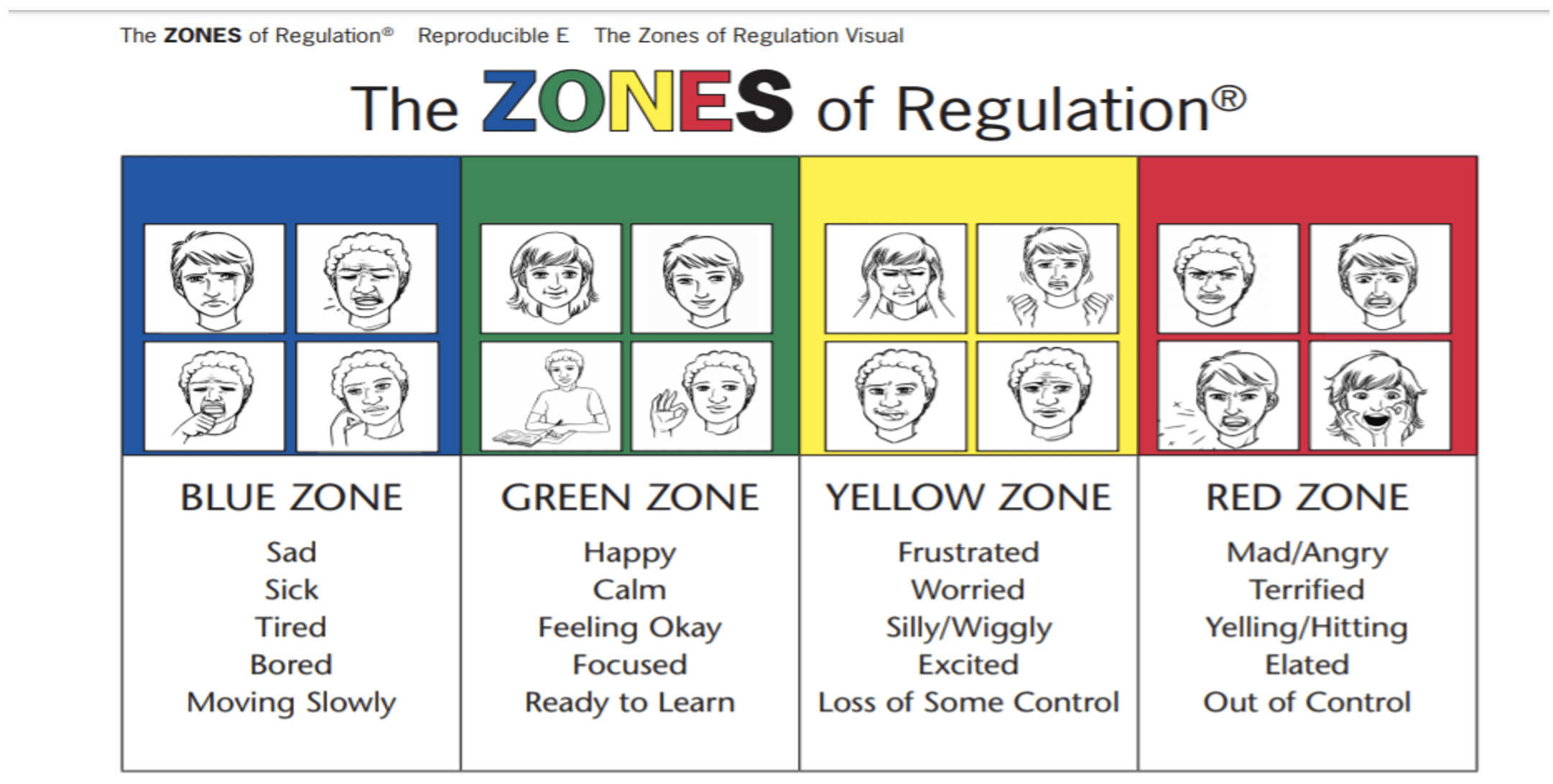
Village Glen School
Using Zones of Regulation
Our students are currently learning about the Zones of Regulation (copyright symbol/make sure to cite Leah Kyupers, OT as the author) to help develop self-regulation skills and emotional control.
Why Use the Zones?
While the overarching goal of the Zones curriculum is for students to develop self-awareness of their emotional states, the purpose or benefit of using the Zones language is four-fold:
- Identify emotions and level of “alertness”
- Know when and how to use coping strategies
- Problem solving for more positive outcomes
- Understand how behaviors influence others
The Zones Colors & Visuals

- Blue
- The Blue Zone is used to describe low states of alertness
- Feelings may include: sad, tired, sick, or bored
- The Blue Zone is associated with a blue “rest area” traffic sign
- The Blue Zone is used to describe low states of alertness
- Green
- The Green Zone represents a calm state of alertness.
- Feelings may include: happy, focused, content, or ready to learn
- The Green Zone is associated with a green “go” traffic sign
- The Green Zone is the optimal Zone and the one we try to get back to by using our coping strategies.
- The Green Zone represents a calm state of alertness.
- Yellow
- The Yellow Zone represents a heightened state of alertness and can serve as a warning
- Feelings may include: stress, frustration, anxiety, excitement, silliness, “the wiggles”, or nervousness
- The Yellow Zone is associated with a yellow “slow” or “proceed with caution” traffic sign
- The Yellow Zone represents a heightened state of alertness and can serve as a warning
- Red
- The Red Zone represents very intense emotions and often leads to difficulty with problem solving
- Feelings may include: elated, anger, rage, devastation, or terror
- The Red Zone is associated with a red “stop” traffic sign
- The Red Zone represents very intense emotions and often leads to difficulty with problem solving

- Blue
- The Blue Zone is used to describe low states of alertness
- Feelings may include: sad, tired, sick, or bored
- The Blue Zone is associated with a blue “rest area” traffic sign
- The Blue Zone is used to describe low states of alertness
- Green
- The Green Zone represents a calm state of alertness.
- Feelings may include: happy, focused, content, or ready to learn
- The Green Zone is associated with a green “go” traffic sign
- The Green Zone is the optimal Zone and the one we try to get back to by using our coping strategies.
- The Green Zone represents a calm state of alertness.
- Yellow
- The Yellow Zone represents a heightened state of alertness and can serve as a warning
- Feelings may include: stress, frustration, anxiety, excitement, silliness, “the wiggles”, or nervousness
- The Yellow Zone is associated with a yellow “slow” or “proceed with caution” traffic sign
- The Yellow Zone represents a heightened state of alertness and can serve as a warning
- Red
- The Red Zone represents very intense emotions and often leads to difficulty with problem solving
- Feelings may include: elated, anger, rage, devastation, or terror
- The Red Zone is associated with a red “stop” traffic sign
- The Red Zone represents very intense emotions and often leads to difficulty with problem solving
To learn more about our schools and programs
For more information and free downloadable resources, please visit the Zones of Regulation website.
The Help Group schools serve children and families with social and learning challenges, including learning differences, autism and emotional dysregulation.
To learn more about our schools and programs
Contact Us
The Help Group schools serve children and families with social and learning challenges, including learning differences, autism and emotional dysregulation.